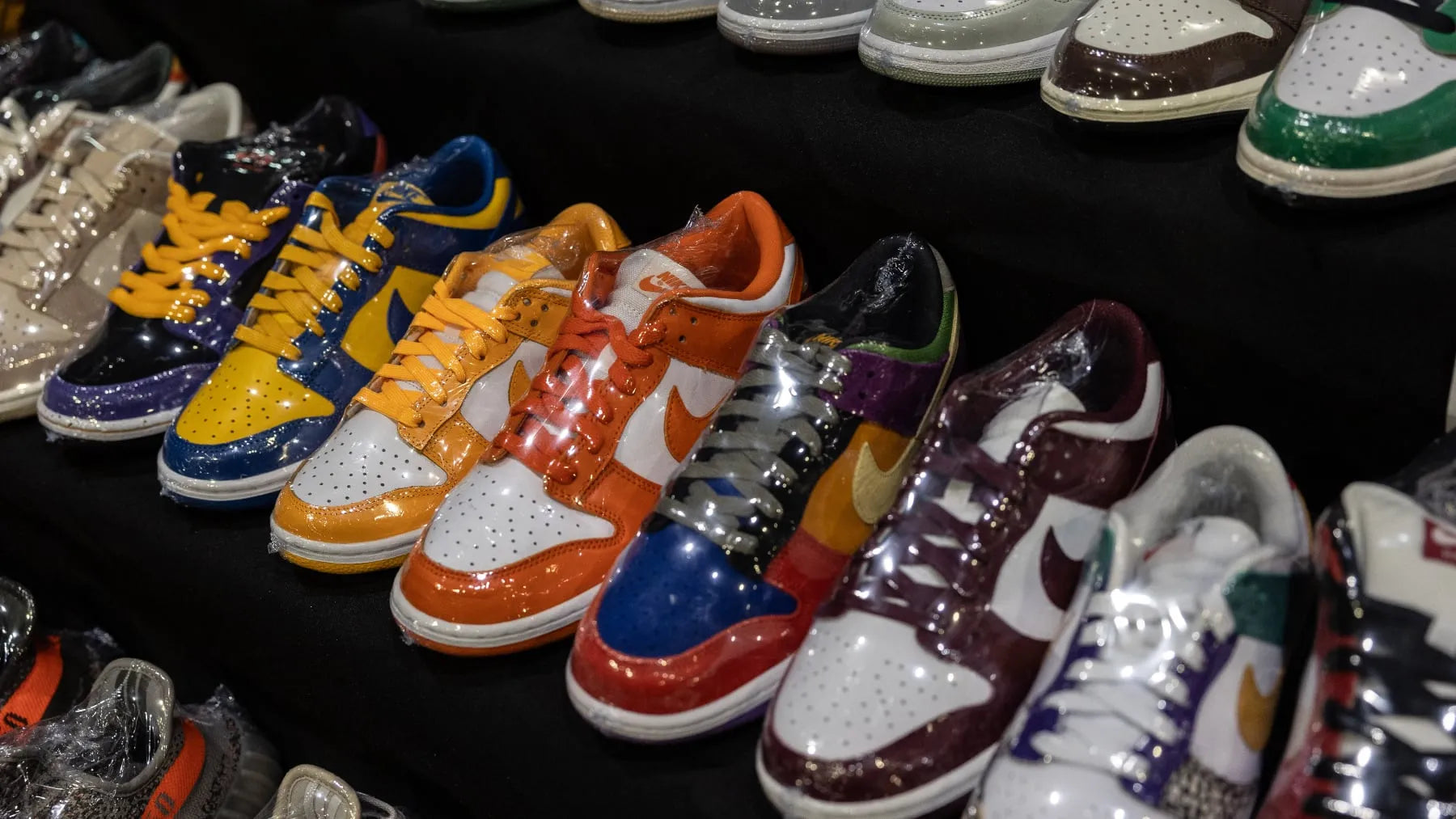
The Sneaker Resale Market: From Boom to Bust and Beyond
Table of Contents
- Key Highlights:
- Introduction
- The Rise and Fall of Resale
- Adapting to a New Reality
- The Challenges of Reselling
- The Future of Sneaker Resale
- FAQ
Key Highlights:
- The sneaker resale market, which thrived in the early 2020s, has significantly cooled, leading many resellers to re-evaluate their strategies.
- Major brands like Nike and Adidas contributed to the market's decline through oversaturation and lack of innovative releases.
- Resellers are diversifying their offerings beyond sneakers, incorporating high-fashion items and other consumer goods to adapt to the changing landscape.
Introduction
The sneaker resale market experienced a meteoric rise in popularity during the early 2020s, fueled by a surge in demand for limited-edition releases and collaborations. However, by 2024, this once-booming market faced a stark reality: the resale bubble had burst. Resellers who once thrived on lucrative margins are now finding themselves in a challenging environment where profits are elusive. This article explores the state of the sneaker resale market, examining the factors leading to its decline and the strategies employed by resellers to navigate this new landscape.
The Rise and Fall of Resale
In 2021, Daniel Arango and his partner Simon Lum opened District One, a New York-based sneaker resale shop, with high hopes of cashing in on the booming sneaker market. The allure of lucrative returns was evident, as established businesses like Stadium Goods and Flight Club had already sold for millions. However, the landscape shifted dramatically by 2024, as the market cooled due to overproduction and a lack of innovation from major brands.
Arango observed firsthand the plight of resellers struggling to make a profit. “We see it every day — people lose money trying to get by and make a little bit of money. It turns into the opposite. They lose money,” he stated. This sentiment reflects a broader trend in the sneaker resale market, where many individuals who once saw themselves as savvy investors are now left with unsold inventory.
The Role of Major Brands
The decline of the sneaker resale market can largely be attributed to the actions of major players like Nike and Adidas. In an attempt to capitalize on the hype surrounding their products, these brands increased production of popular styles, leading to market oversaturation. For instance, Nike's decision to ramp up production of coveted models such as the Nike Dunk and Air Jordan 1 resulted in a significant drop in resale values.
Adidas also faced challenges, particularly after severing ties with Kanye West in late 2022. While this decision was criticized, the brand had already flooded the market with numerous releases, diluting the exclusivity that typically drives resale prices. As a result, even as other brands like Asics and New Balance attempted to capture market share, the overall impact on the resale market was minimal.
A Cooling Market
As the sneaker resale market began to cool, data from UBS revealed a decline in prices for Nike and Jordan footwear on the secondary market. In June, prices fell by 6.8 percent for Nike and 5.6 percent for Jordan, although this represented a slight improvement over previous months. Resellers are now tasked with finding new avenues for profit, as the once-reliable strategy of flipping sneakers at a premium is no longer viable.
Brendan Dunne, StockX's senior director of customer community and engagement, identified the missteps of major brands as a key factor in the market's decline. He emphasized that despite the downturn, there is reason for optimism as brands strive to recapture the magic that once defined their offerings. As we move into 2025, there is a renewed focus on limited releases that resonate with consumers.
Adapting to a New Reality
In the wake of the resale market's decline, many resellers are reevaluating their business models. The days of relying solely on sneakers for income are long gone; the market now demands diversification. As competition intensifies, successful resellers are expanding their portfolios to include a broader range of products.
Diversification in Offerings
Platforms like StockX and eBay have responded to the changing landscape by broadening their categories beyond sneakers. StockX has incorporated gaming systems, electronics, and collectibles into its inventory, while eBay has reinforced its authenticity guarantee across various consumer goods, from streetwear to luxury handbags and watches. This expansion allows resellers to tap into new markets and cater to a wider audience.
Arango's District One is also adapting to the evolving marketplace by increasing its offerings. The shop has begun selling tertiary brands like Asics, Hoka, and On, which have gained popularity in recent years. Additionally, high-fashion items such as Chrome Hearts and Louis Vuitton apparel are now part of their inventory, reflecting a shift in consumer preferences.
Finding New Profit Margins
Resellers are also focusing on volume rather than high margins. Vernon Simms, a seasoned reseller, has shifted his strategy to sell between 600 to 1,000 pairs of sneakers each month. This approach has proven to be more sustainable in the current market climate, where chasing high-profit margins is increasingly challenging. Simms has successfully generated over $10 million in revenue, including substantial earnings during the peak of the market.
The Challenges of Reselling
While adapting to the new reality is crucial, reselling sneakers is no longer a straightforward endeavor. The effort required to turn a profit has increased significantly, with established players dominating the market. Many newcomers lack the capital necessary to compete effectively, making it difficult for amateurs to succeed.
The Barrier to Entry
The sneaker resale market now favors those with established connections and substantial financial backing. Arango notes, “You can’t compete with people who have millions of dollars in this game and spend millions of dollars a month on product.” This reality creates a daunting barrier for newcomers looking to break into the industry.
For those who previously relied on winning sneaker raffles as a means of profit, the landscape has evolved. The influx of competition has made it increasingly difficult to secure inventory, necessitating a more strategic approach to sourcing products.
The Future of Sneaker Resale
Even as the sneaker resale market grapples with challenges, there is potential for revival. Brands are slowly recognizing the importance of innovation and exclusivity in driving consumer interest. The reintroduction of limited-edition releases is already generating excitement among sneaker enthusiasts, suggesting that the market could see a resurgence in the coming years.
Building a Sustainable Business
To thrive in the current market, resellers must focus on building sustainable businesses that adapt to consumer trends. This includes leveraging technology to enhance their operations and reach a broader audience. By embracing a multi-channel approach, resellers can capitalize on the growing interest in collectibles and other product categories.
Collaborations and Limited Releases
Resellers are keenly aware of the value of collaborations and limited releases in driving demand. Recent data indicates a growing interest in unique offerings, with collaborations often commanding higher resale prices. The Caitlin Clark Kobe 5 protro, for instance, showcased a remarkable resale premium, highlighting the potential for well-executed collaborations to capture consumer attention.
FAQ
What led to the decline of the sneaker resale market?
The sneaker resale market declined primarily due to oversaturation from major brands such as Nike and Adidas, which increased production of popular styles and diluted exclusivity.
How are resellers adapting to the current market conditions?
Resellers are diversifying their product offerings beyond sneakers, incorporating high-fashion items, collectibles, and electronics to maintain profitability.
What strategies are successful resellers employing?
Successful resellers are focusing on volume sales rather than relying on high-profit margins, often selling hundreds or thousands of pairs monthly to generate revenue.
Is it still possible to profit from sneaker reselling?
While challenging, profitable opportunities remain for established resellers who can navigate the current market dynamics and leverage limited releases and collaborations.
What does the future hold for the sneaker resale market?
The future may see a revival in the sneaker resale market as brands focus on innovation and exclusivity, appealing to consumer demand for unique and limited-edition products.
POWER your ecommerce with our weekly insights and updates!
Stay aligned on what's happening in the commerce world
Email Address
Handpicked for You

08 September 2025 / Blog
How to Avoid Greenwashing: Rules, Real-World Examples, and a Practical Playbook for Honest Environmental Claims
Read more
08 September 2025 / Blog
Klaviyo 2025: How its AI-Driven CRM Transforms Shopify Email Marketing and the Customer Experience
Read more
08 September 2025 / Blog


